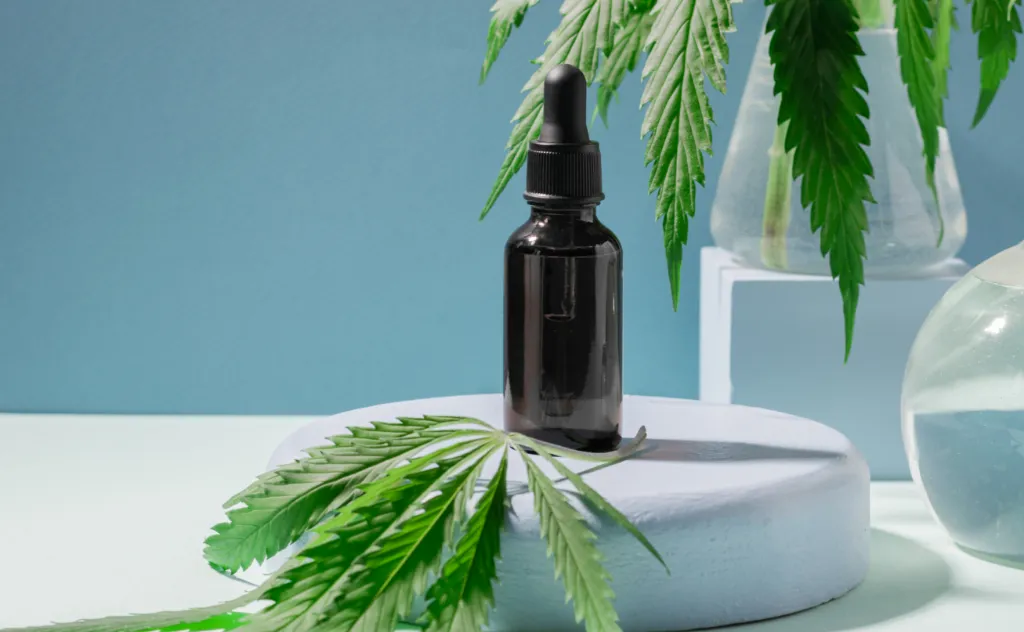Do you find yourself in the position of having to treat a serious illness and have medical cannabis been proposed as a solution? Or have you read about it on the web and would like to know more?
Medical cannabis is a variety of cannabis sativa that is used for medical purposes, to treat certain specific diseases.
Although cannabis is often referred to generically, medical cannabis is a particular type that should not be confused with the kind that you can commonly find in physical and online shops. In fact, unlike light cannabis, which has a THC content of less than 0.5%, medical cannabis has a much higher THC content of up to 18%.
THC is the active ingredient that has psychoactive effects and interacts with the body’s endocannabinoid system.
Precisely because of its high THC content, medical cannabis is only sold in pharmacies and on prescription. Even the one in Italy (where Maria CBD Oil was born) is produced by a Dutch company called Bedrocan and has a THC concentration of 22%. Then there is FM1 with CBD below 1% and THC between 13-20%, and FM2, with CBD between 7.5-12% and THC between 5-8%.
Medical cannabis has made its way into powerful yet natural treatments due to its diverse therapeutic properties such as anti-inflammatory, analgesic, anticonvulsant, anti-emetic and antianxiety.
However, medical cannabis is not without side effects, which may be physical or psychological. In this article, we will see what the side effects of medical cannabis are and how best to manage them.
What does medical cannabis do?
As mentioned earlier, THC acts on the body’s endocannabinoid system, which is involved in the regulation of several physiological functions including pain perception, appetite, mood and sleep.
The endocannabinoid system is composed of cannabinoid receptors, endocannabinoids naturally produced in the human body, and the enzymes responsible for their synthesis and degradation. These receptors are present in many parts of the body, including the brain, central nervous system, immune system, reproductive organs and other tissues.
When taking medical cannabis, active compounds such as THC and CBD bind to cannabinoid receptors in the body. THC, in particular, can produce psychoactive effects that can affect mood, perception and cognition as it acts more on the brain. At the same time, both THC and CBD can have therapeutic effects.
What is it used for?
Medical cannabis can be used to alleviate the symptoms of various diseases and conditions, both chronic and acute.
Among these, the most common are:
- Spasticity and other symptoms associated with multiple sclerosis: medical cannabis can reduce muscle stiffness, pain and tremors caused by this neurodegenerative disease;
- Nausea and vomiting associated with chemotherapy: can counteract the side effects of cancer therapy by stimulating appetite and preventing weight loss;
- Chronic pain: may have an analgesic effect in cases of neuropathic pain, caused by injuries to the nervous system, or pain associated with conditions such as fibromyalgia and arthritis;
- Sleep disorders and anxiety: it can promote relaxation and rest at night, relieving stress and agitation;
- Epilepsy and refractory epilepsy: can reduce the frequency and intensity of epileptic seizures, especially in cases resistant to conventional drugs;
- Cancer: can have a palliative effect in cancer patients, improving quality of life and alleviating symptoms such as pain, nausea, vomiting and cachexia.
Please note, however, that it can only be used with a doctor’s prescription, so it must be determined by a specialist whether medical cannabis can provide relief for a specific condition.

How long does the effect of medical cannabis last?
Establishing a priori the duration of the effect of medical cannabis is difficult, because it is not the same for everyone and under all conditions.
As with any other variety of the product, the duration of the effect depends on several factors:
- The quantity and quality of cannabis taken: the higher the dose and THC content, the longer the effect lasts;
- The route of administration: inhalation has a faster and more intense, but also shorter, effect than oral ingestion;
- Individual metabolism: some people eliminate THC faster than others, depending on weight, gender, age and liver and kidney function;
- Habit of consumption: habitual users have a higher tolerance to THC and therefore a less long-lasting effect.
In general, we can say that the effect of medical cannabis begins a few minutes after inhalation and about an hour after oral ingestion.
The effect peaks approximately 30 minutes after inhalation and 2-3 hours after oral ingestion. It then begins to diminish about 2-3 hours after inhalation and 6-8 hours after oral ingestion.
However, residual effects may persist for 12-24 hours or even longer, depending on the factors listed above. Knowing this is useful if you have to drive or perform work.
What are the side effects?
As with any other substance, there are also side effects of medical cannabis. They generally occur when the product is used unwisely or when it is taken together with other drugs.
Common contraindications include:
- Dry mouth: reduction of saliva that can lead to difficulty swallowing, caries and oral infections;
- Tachycardia: increased heart rate, which can be dangerous for those with heart problems;
- Mood alteration: change in emotional state that can lead to paranoia, anxiety euphoria or even depression;
- Insomnia: difficulty falling asleep or maintaining sleep;
- Conjunctival hyperemia: reddening of the eyes due to dilated blood vessels.
There are also other serious side effects:
- Paranoid and anxiety crises: feeling of fear, anguish, persecution or threat, which may lead to panic attacks, hallucinations or delusions;
- Psychosis: loss of contact with reality, which may manifest as disturbances in thinking, language, perception and behaviour;
- Impairment of cognitive functions: impairment of attention, memory, judgement and learning, which may have consequences for school or work performance;
- Addiction: physical and psychological habituation to the substance that leads to a compulsive need to take it and a withdrawal syndrome if it is discontinued.
To minimise the risk of contraindications, it should be remembered that medical cannabis should not be taken during pregnancy or lactation, or in association with alcohol or other psychoactive substances.
How does it affect the brain?
Unlike CBD, THC acts more on the central nervous system and thus also on the brain.
The question that arises at this point is: what happens in the brain with cannabis?
There are different kinds of consequences, among the positive ones we find:
- Therapeutic effects: It can alleviate the symptoms of diseases such as chronic pain, multiple sclerosis, glaucoma and certain types of tumours by acting on cannabinoid receptors in the brain and spine;
- Neuroprotective effects: can protect the brain from damage caused by trauma, stroke or neurodegenerative diseases by stimulating nerve cell survival.
Negative consequences include:
- Psychoactive action: can cause mood swings to the point of altering the perception of reality by causing hallucinations, delusions and changes in the perception of time;
- Cognitive effects: it can reduce the volume of certain brain areas such as the orbitofrontal cortex, especially in cases of addiction, as well as altering perception, memory and learning;
- Psychiatric effects: it may increase the risk of developing mental disorders such as schizophrenia, especially in predisposed individuals or those who began using cannabis during adolescence.
Knowing that it can affect the ability to drive or perform activities that require attention and coordination, it is therefore very important to know how it affects the brain.
Difference between medical cannabis and light cannabis
Light cannabis is sold to the public in all shops you encounter in the offline and online world. In contrast, medical cannabis is only sold in pharmacies and can be purchased by those with a prescription from their doctor.
There are currently no laws in the UK regulating the amount of CBD present in cannabis products. The story is quite different with regard to THC, and it’s this active ingredient that differentiates medical cannabis from light cannabis.
-
 Ak47Price range: £3.50 through £270.00From 0,88 €/gr
Ak47Price range: £3.50 through £270.00From 0,88 €/gr -
 Amnesia HazePrice range: £3.50 through £350.00From 0,88 €/gr
Amnesia HazePrice range: £3.50 through £350.00From 0,88 €/gr -
 BlueberryPrice range: £3.50 through £270.00From 0,88 €/gr
BlueberryPrice range: £3.50 through £270.00From 0,88 €/gr -
 BubblegumPrice range: £3.50 through £270.00From 0,88 €/gr
BubblegumPrice range: £3.50 through £270.00From 0,88 €/gr -
 Candy KushPrice range: £3.50 through £350.00From 0,88 €/gr
Candy KushPrice range: £3.50 through £350.00From 0,88 €/gr -
 Gorilla GluePrice range: £3.50 through £350.00From 0,88 €/gr
Gorilla GluePrice range: £3.50 through £350.00From 0,88 €/gr -
 Grand Reserve Super SkunkPrice range: £3.50 through £270.00From 0,88 €/gr
Grand Reserve Super SkunkPrice range: £3.50 through £270.00From 0,88 €/gr -
 Green CrackPrice range: £8.00 through £350.00From 3,50 €/gr
Green CrackPrice range: £8.00 through £350.00From 3,50 €/gr -
 Jack HererPrice range: £3.50 through £350.00
Jack HererPrice range: £3.50 through £350.00
CBD and THC
To recapitulate, medical cannabis is used for medical purposes, under the supervision of a qualified health professional. It usually contains significant amounts of THC, the active ingredient responsible for psychoactive effects. Very often, the CBD levels contained in these products are quite low.
In contrast, light cannabis is a form of cannabis that contains very low levels of THC (within 0.2% in the UK) and higher levels of CBD, the non-psychoactive cannabinoid. In many jurisdictions, including the UK, light cannabis is legal and available for purchase without a prescription. Because the THC content is reduced, psychoactive effects are minimal or absent. Light cannabis is often used as a dietary supplement, as CBD is associated with potential health benefits, such as reduced anxiety and inflammation.
Properties of light cannabis
Light cannabis has several properties that make it attractive to some consumers.
Here are some of its main features:
- Non-existent psychoactive effects: its psychoactive effects are practically non-existent in most users, which means that it does not cause the intense ‘high’ typical of taking cannabis with a high THC content;
- Potential health benefits: many users report improved mood, a relaxing effect and a reduction in anxiety and inflammation;
- Legality: it is legally available for purchase and consumption without the need for a prescription.
If you are interested in discovering and trying Maria CBD Oil‘s light cannabis products, we suggest you visit our shop now.
There you will find a wide range of items that may meet your needs. Always remember to do your research, consult local guidelines and, if necessary, talk to a health professional before using any cannabis product.
 Contact us
Contact us 






